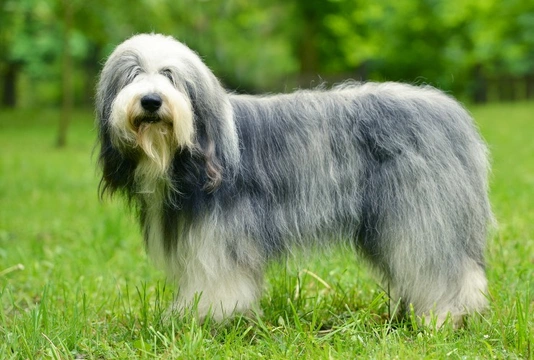Pets
Pets for studWanted petsBreedersAccessories & services
Knowledge hub
Support
Support & safety portal
Primary Ciliary Dyskinesia (PCD) in the Old English sheepdog
Primary ciliary dyskinesia or PCD for short is a hereditary health condition that can affect the Old English sheepdog breed. The condition affects the dog’s lungs and airways by leading to motility defects in the cilia, short hair-like structures that move to help to clear mucous and debris out of the airways, lungs and nose. The condition also affects the flagella that are responsible for the propulsion of sperm cells.
Because the condition renders the cilia ineffective, affected dogs will have problems clearing mucous from their airways in the normal fashion, which leads to a chronic build-up of mucous that becomes ever more viscous and thick, to the point that it can block the trachea, nasal airways and lower airways.
This can lead to a range of chronic respiratory problems developing, including bronchitis, bronchopneumonia, rhinosinusitis and other airway issues. The earliest symptoms of conditions like these usually become apparent when the affected dog is under a year old, and can include lethargy and exercise intolerance, coughing and sneezing, and a range of other symptoms that can in some cases be confused with allergies.
Primary ciliary dyskinesia can also cause infertility in affected dogs, as well as problems with the ears, renal fibrosis, and a range of other issues as well.
The condition is considered to affect the Old English sheepdog breed to the extent that pre-breeding screening for the condition is strongly recommended, and as such it falls under The Kennel Club’s official DNA testing scheme for the Old English sheepdog breed.
In this article, we will look at primary ciliary dyskinesia in more detail, including how the heredity of the condition works, and how to get your dog tested. Read on to learn more.
More about primary ciliary dyskinesia
Primary ciliary dyskinesia is present from birth in affected dogs, who may suffer from coughs and sniffles from a young age and a general failure to thrive.
The condition can potentially come accompanied by a very broad range of different symptoms that can affect the lungs, respiratory tract, ears, reproductive system and kidneys, and unless the affected dog is known to be at risk for the condition, diagnosis in the first instance can be challenging, due to the number of potential differential diagnosis that may be considered too.
Because primary ciliary dyskinesia’s most obvious symptoms include coughing, sneezing and other respiratory issues, they may be mistaken for allergies-however, if you own an Old English sheepdog and observe these symptoms and do not already know your dog’s status, primary ciliary dyskinesia should be considered.
What sort of dogs can be affected by the condition?
Primary ciliary dyskinesia has been identified in the UK in the Old English sheepdog dog breed, and dogs of this breed should be tested prior to breeding to find out their status, and find the right mating match to produce healthy puppies.
Cross breed dogs that have one Old English sheepdog parent can also inherit one of the two mutated genes necessary to cause the affected form of the condition, and while the benefits of hybrid vigour means that a dog with one clear parent will not be affected by the condition themselves, they may become a carrier for it.
How does the heredity of the condition work?
Primary ciliary dyskinesia is passed on from dog to dog by means of autosomal recessive heredity, which means that the status of both sides of the parentage is what dictates the final status of the litter that any two dogs have.
Dogs are assigned to one of three statuses for the condition: clear, carrier or affected. Different combinations lead to different results in the litter, which can be outlined in simple terms as follows:
- Two clear dogs will have clear puppies.
- Two affected dogs will have affected puppies.
- Two carriers will produce a mixed litter of 50% carriers, 25% clear and 25% affected.
- A clear dog and a carrier will have a mixture of 50% clear and 50% carriers.
- A clear dog and an affected dog will have a mixture of 50% clear and 50% affected.
- A carrier and an affected dog will have a mixture of 50% carriers and 50% affected.
How to get your dog tested for primary ciliary dyskinesia
In order to get your dog tested for their status of primary ciliary dyskinesia and so, find out whether or not they are apt to have problems or be able to pass the condition on to their offspring, you will simply need to ask your vet to take a DNA sample from your dog, in the form of either a vial of blood or a buccal swab (a sweep of the cells from the inside of the dog’s cheek).
This is then sent off to one of The Kennel Club’s approved laboratories for testing, and they will then return the result to you.



